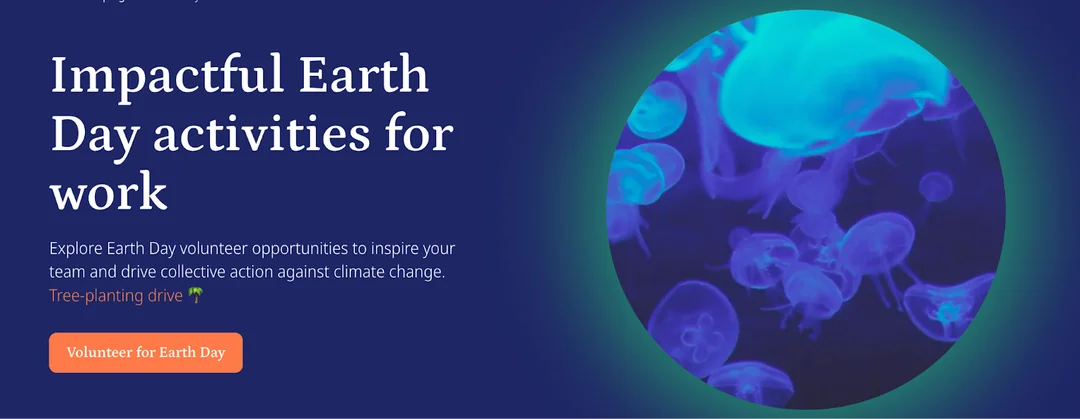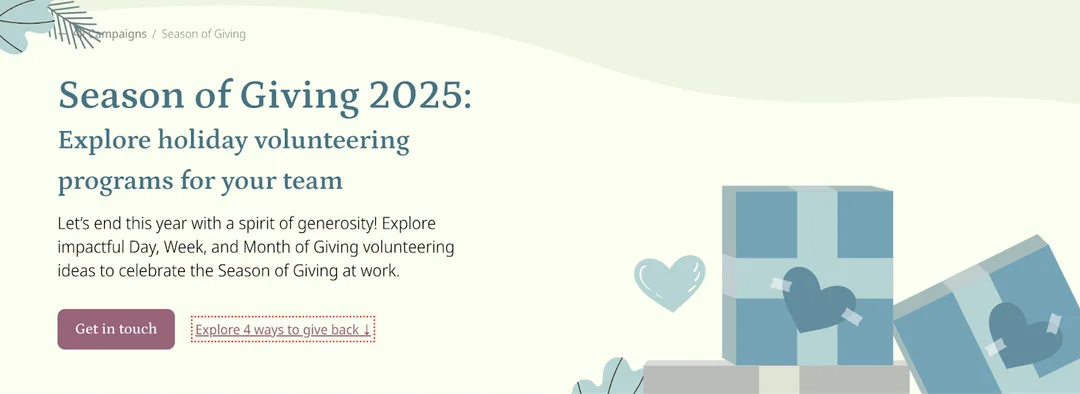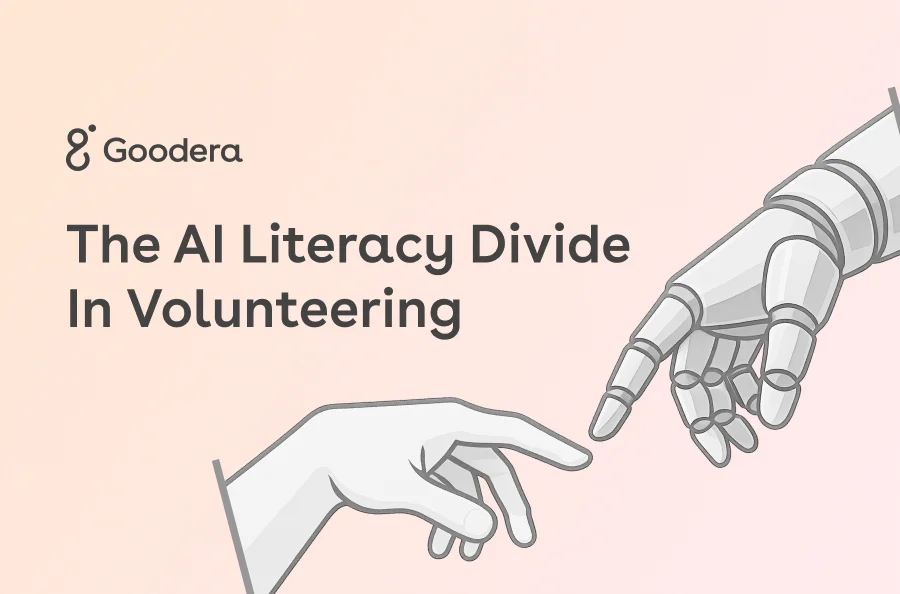Community Service Ideas
There’s something powerful about stepping away from the daily grind, rolling up your sleeves, and doing something meaningful together. You find connection in shared smiles at a food bank, the joyful chaos of planting a community garden, or the laughter that fills the room while packing care kits for families in need.
For workplaces, these moments go far beyond impact. They spark empathy, renew purpose, and create bonds that last long after the activity ends. In a world where people crave belonging and meaning, community service reminds us that we’re part of something bigger than ourselves.
In this guide, we’ll explore fun, practical, and impactful community service ideas designed for teams at work. From classic volunteering to creative team-building projects, these ideas will help you make a real difference, all while bringing your people closer together.
What is the Main Idea of a Community?
Community is connection. It’s people looking out for one another, sharing responsibility, and finding strength in togetherness. That togetherness is what gives a community its strength. From small circles to global networks, communities thrive when people unite.
What are Some Good Community Service Ideas for Teams?
The best community service ideas combine impact with engagement. From classic activities like food drives to creative team challenges, these opportunities help employees give back while also strengthening their bonds with one another.
Here are some tried-and-true ideas:
1. Food Distribution at Shelters
Helping ensure vulnerable communities have access to meals is one of the most direct ways to make a difference. Teams can volunteer at local soup kitchens or food shelters, stepping in to help with meal prep, cooking, serving, or even packaging food for delivery. What looks like a simple serving line on the outside usually involves a lot of behind-the-scenes planning from coordinating food supplies and prepping large-scale menus to ensuring dietary needs are met and logistics for delivery are handled smoothly. Volunteers often become part of this ecosystem, experiencing firsthand how many moving pieces are required to get a warm meal on someone’s plate.
Starbucks, for instance, has supported food distribution through its FoodShare program, which redirects unsold food from stores to local nonprofits every single day. Employees are involved in the collection and redistribution process, making sure meals are safely packaged and delivered to community partners who can get them into the hands of families in need (Starbucks Stories, 2023).
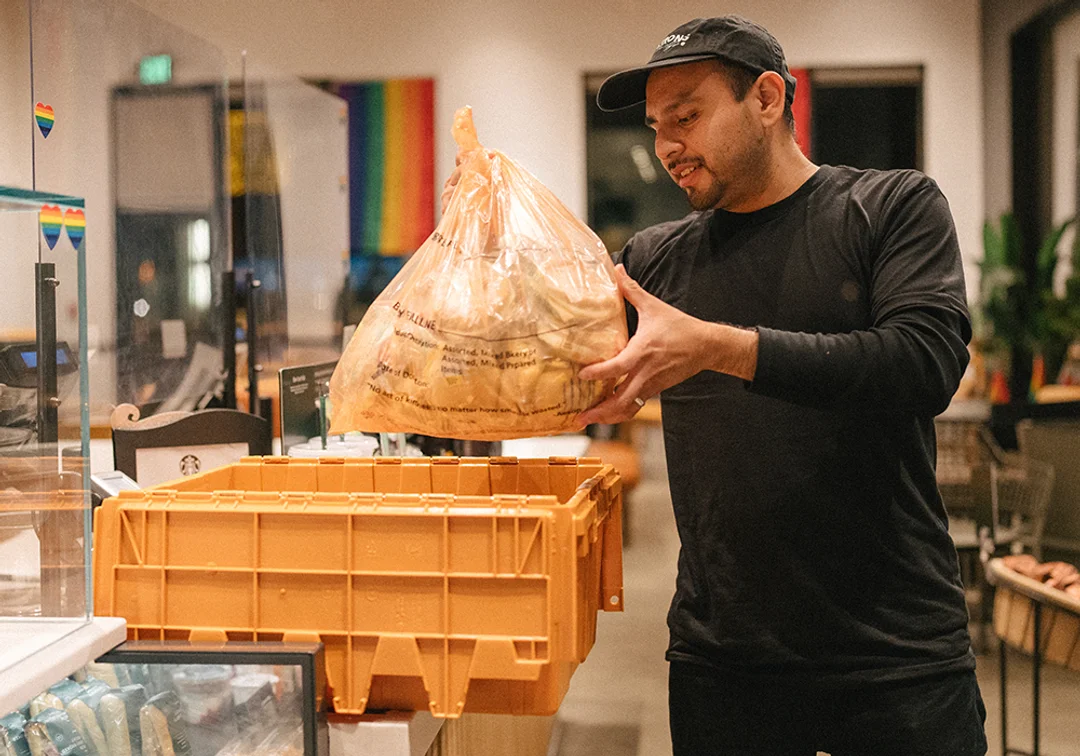
It’s a structured program that requires coordination between staff, nonprofits, and food banks to keep running seamlessly.
Supporting Food Distribution: Meet the Nonprofits Making a Real Difference
When we talk about nonprofits fighting hunger, there are organizations out there whose work goes beyond short-term fixes; they’re building systems that nourish communities daily.
- Second Servings rescues surplus cookshop or event food that would otherwise be wasted, and delivers it safely to food pantries and shelters. Every pound of food they save is a pound put back into someone’s stomach, kind of like turning leftovers into lifelines.
- Sojourner House believes food isn’t just a meal, it’s hope. They create a nurturing environment where families facing homelessness find not only nourishment but also housing support, education, and workforce training. It’s community-building with compassion.
- Open Hand San Francisco caters to seniors and individuals with serious health challenges, delivering tailored meals and nutritional counseling.
- Feed My Starving Children brings volunteers together to pack meals that travel across borders, filling bowls and building connections. It’s a deeply tangible way to see your impact in action.
- Society of St. Andrew gleans leftover crops from farms that would otherwise be left unharvested, and delivers the produce straight to hunger relief agencies. It’s food rescue and environmental care all rolled into one simple harvest.
Volunteering around meal distribution may seem like a straightforward task, but there’s a huge amount of persistence and coordination behind every effort—sourcing, prepping, packaging, and delivering food at scale is no small feat. For teams, this opens up ample opportunities to contribute meaningfully, whether they’re cooking side by side, running donation drives, or helping nonprofits reach more families with consistent support.
2. Mentoring or Tutoring Programs
Guiding someone through mentorship can be one of the most rewarding community service ideas. It’s not just about sharing knowledge; it’s about building confidence, opening doors to new opportunities, and letting young learners know they are truly seen and supported. Employees can get involved in many ways, from scheduling one-on-one sessions and co-creating lesson plans to hosting career panels, running skills workshops, or forming small tutoring pods. And the most rewarding moments often come quietly, when a learner leaves with a new skill, fresh motivation, or a clearer sense of the future ahead.
Deloitte brings this mindset to life through initiatives like its RightStep Virtual Mentoring Program, where professionals connect with high school and college students to help them navigate academic and career challenges via Strive for College’s platform, uStrive. In India, their WorldClass initiative partners with Udayan Care to empower girls through mentorship, scholarships, and life-skills workshops—creating opportunities that many wouldn’t otherwise have.

Several nonprofits excel at creating structured pathways for mentoring:
- Strive for College uses its virtual platform to connect students with mentors nationwide, focusing on college readiness and aspiration-building.
- Year Up pairs students with mentors who guide them through intensive professional development and career exposure.
- One Million Degrees supports community college students with both financial aid and mentorship, helping them persist toward graduation.
Volunteering through mentoring may seem like simply “teaching a class,” but it’s really about building bridges between schools and workplaces, between employees and the next generation workforce, and between knowledge and opportunity. For teams, it creates a chance to learn from each other while giving back, reminding everyone that growth is most meaningful when it’s shared.
3. Organizing Clothing Drives
Clothing drives are one of the most fun community service ideas because they combine generosity with creativity. Teams can make the process engaging by setting up donation themes like “winter warmers” or “professional wear for job seekers” and even adding a friendly competition between departments. This simple act makes a tangible difference, especially for shelters, disaster relief organizations, and nonprofits supporting underserved families.
For companies, clothing drives also rank high among team-building community service ideas. Sorting, packing, and distributing donations encourages employees to collaborate outside of their usual work roles, strengthening bonds while serving a shared mission. It transforms the act of giving into an energizing activity that unites people around impact.
Organizations like Dress for Success empower women entering the workforce by providing professional attire, while Planet Aid collects gently used clothing to support global poverty alleviation and environmental sustainability. Hosting a drive in partnership with such nonprofits turns a simple collection box into a real engine for change.
When run as a group effort, a clothing drive turns into one of the most effective team-building community service ideas. Employees work together to collect, sort, and deliver donations, building camaraderie along the way. Beyond the teamwork, these team community service ideas directly help community members by providing essentials like interview outfits, warm coats, or everyday wear that can make daily life a little easier.
4. Community Clean-Up Events
Community clean-up initiatives are a great way to see tangible results from efforts put in by your team. It could be in terms of cleaner streets, revitalized parks, or restored public spaces. Picking up litter or painting over graffiti may seem simple, but these actions create a visible impact that improves quality of life and fosters pride in neighborhoods.
Teams can organize recurring clean-up days, adopt local parks or streets, or even collaborate with municipalities to expand green spaces. Larger groups can split into task forces specific to trash collection, recycling sorting, beautification projects, and more, so that everyone has a role to play.
Citi demonstrates this approach through its annual Global Community Day, where employees and their families participate in neighborhood clean-up projects, park restorations, and city beautification drives worldwide. These efforts transform public spaces while strengthening bonds within teams and with the communities they serve.
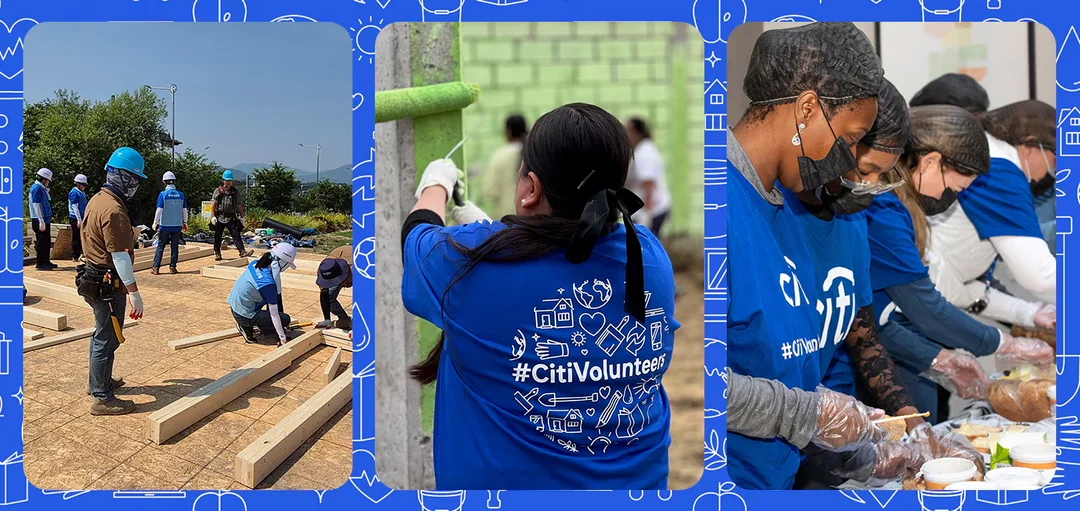
Here are some nonprofits making a real difference through their community service initiatives:
- Keep America Beautiful runs one of the most recognizable community clean-up movements in the United States. Their Great American Cleanup is the country’s largest community improvement program, mobilizing millions of volunteers every year to tackle litter, restore public spaces, and beautify neighborhoods. Corporate teams can plug in by sponsoring clean-up sites, organizing employee participation days, or even providing in-kind resources like supplies and equipment. These efforts not only create cleaner environments but also nurture pride and stewardship in local communities.
- The Ocean Conservancy has made a global name for itself through the International Coastal Cleanup, which gathers millions of volunteers across more than 150 countries. Together, they have removed hundreds of millions of pounds of trash from beaches and waterways—data that also informs policy change and preventive waste strategies. Corporate groups can join organized cleanup drives, adopt coastal stretches for ongoing care, or even use the Conservancy’s data collection tools to track impact. It’s a hands-on way to connect sustainability commitments with tangible, visible results.
- Adopt-a-Highway programs offer companies the chance to take long-term ownership of local beautification. Available in many regions, these programs invite corporate teams to “adopt” stretches of road by committing to regular litter removal and upkeep. In return, the company’s name is displayed on signage along the adopted section, signaling civic pride and sustained investment in community well-being. For employees, these recurring clean-ups can double as teambuilding activities, while for the public, they demonstrate visible and ongoing corporate responsibility.
Clean-up events remind us that change can be immediate, visible, and deeply motivating. Every bag of trash collected is a statement that communities thrive when we care for them together.
5. Animal Shelter Support

Animals have a special way of offering love without words. The happy wag of a dog’s tail or the gentle nuzzle of a kitten seeking attention can brighten even the hardest day. Lending a hand at shelters means helping them feel safe, cared for, and one step closer to finding a loving home.
Whether it’s walking dogs, socializing cats, or helping with adoption events, you can make life brighter for animals waiting for homes. Teams can also contribute by assisting with shelter upkeep, fundraising campaigns, or supply drives for food, bedding, and toys. For larger groups, shelters often welcome help in organizing adoption fairs or awareness campaigns to promote responsible pet care.
Salesforce highlights this commitment through volunteer days that include supporting local animal shelters, where employees dedicate hours to both hands-on care and strategic fundraising. The result: healthier, happier animals and more adoptions made possible.
Nonprofits and networks to consider:
- Best Friends Animal Society leads one of the most ambitious efforts to make the United States a no-kill nation. Through its nationwide shelter partnerships, it works to save pets from euthanasia by increasing adoption rates, supporting foster networks, and driving awareness campaigns. Corporate groups can get involved by volunteering at partner shelters, helping run adoption events, or supporting fundraising and awareness initiatives that amplify the mission.
- ASPCA not only advocates for animal welfare but also provides hands-on opportunities for corporate teams. Volunteers can assist in animal rescue operations, support fostering programs, or help with adoption drives. Many companies also collaborate with ASPCA on education and fundraising events, making it possible for employees to contribute both time and skills while advancing a respected national cause.
Supporting animal shelters is more than a day of service—it’s about giving voice and comfort to creatures who depend on us. For teams, it’s a chance to experience the joy of compassion firsthand and to see how small acts of care can ripple outward into entire communities.
6. Environmental Community Service Ideas
Imagine rolling up your sleeves, and being able to become the change we have always wanted to see. Even better with your peers right next to you, chipping in to make a difference.
Environmental volunteering allows employees to contribute to solutions for one of the biggest challenges of our time: sustainability. You can organize community services like tree-planting and habitat restoration, energy conservation workshops or e-waste recycling drives, and more. Employees can get involved in direct action like planting, gardening, restoring, etc., or in strategic roles such as planning awareness campaigns and building sustainable practices within the workplace. Larger teams can commit to long-term projects like creating pollinator gardens, partnering with local farms, or restoring wetlands.
Microsoft embraces this through its AI for Earth and employee volunteer initiatives, where teams support conservation projects, climate education, and biodiversity efforts in local communities. This mix of hands-on work and tech-enabled impact underscores how companies can leverage both time and expertise.
Some nonprofit organizations you can work with:
- Pick Up China — This grassroots movement has rallied hundreds of thousands to join World Cleanup Day and even tackled tonnes of waste during Typhoon Taba in Shanghai, showing that every act, big or small, matters.
- Way For Life (India) — Known for reforestation, upcycling, and community development, they’ve impacted over 6,000 people through corporate volunteering and eco-initiatives—perfect for teams looking to pair action with education.
- Let’s Do It World (LDIW) — The powerhouse behind World Cleanup Day is truly global, uniting 14.9 million volunteers across 191 countries to tackle our planet’s mess, one cleanup at a time.
- Plant-for-the-Planet (Spain) — A youth-led revolution in reforestation, this group has planted over 151,000 trees in Andalucía. Ideal for teams who want to mentor while they plant—and leave something living behind.
Also Read: 10 Best Environmental Nonprofits to Partner With In 2025.
When it comes to giving back, few activities feel as energizing as caring for the planet together. Goodera’s environmental community service ideas, like tree planting, stream cleanups, and reforestation efforts, turn sustainability into a hands-on experience for employees. We will help you plan the entire engagement, handle end-to-end logistics, and measure impact.
7. Holiday Giving Programs
The holiday season offers unique opportunities for companies to rally around generosity and inclusion. Employees can volunteer to assemble care packages, host toy or coat drives, or partner with local nonprofits to deliver meals. Teams can also coordinate holiday events for underserved communities, ensuring children, seniors, or families feel included in celebrations. Larger groups might organize entire donation campaigns or holiday fundraisers, multiplying their impact.
Google embodies this spirit with its Holiday Giving Campaigns, where employees worldwide contribute through toy drives, charity donations, and local volunteering. These initiatives combine individual generosity with collective action, making the season brighter for thousands.
Some nonprofits you can partner with:
- Toys for Tots: This holiday-spreading hero collected and distributed a record-breaking 24.4 million toys, books, and games to 9.9 million children in 2022 alone. Over its 75-year history, the program has delivered more than 627 million toys to 281 million children.
- Operation Christmas Child: Since 1993, this initiative from Samaritan’s Purse has collected and delivered over 232 million shoebox gifts to children across more than 170 countries and territories. In 2024 alone, nearly 11.9 million shoeboxes were packed and shared.
- Meals on Wheels: Operating nationwide, Meals on Wheels serves an astonishing 251 million meals annually, reaching more than 2 million seniors, including thousands of veterans.
As the festive season kicks off in September, a spirit of generosity fills the air. It’s a time when employees naturally want to come together, celebrate community, and spread kindness. Holiday giving creates countless opportunities to make an impact — from bringing joy to children through toy drives, to sharing warm meals with seniors, to sending care packages that travel across borders and brighten lives around the world.
How to Choose a Community Service?
The community service idea you choose should feel natural to your organization. Think about what aligns with your company’s values and the causes you care about, then layer in your team’s skills and availability. For example, a tech team might love mentoring students in coding, while a customer-facing team might enjoy helping at a local food bank.
It also helps to be realistic about bandwidth. Some seasons call for quick, high-impact projects like a donation drive, while others allow space for longer commitments such as mentorship or skills-based volunteering. When you strike the right balance between what your people can give and what the community needs, the experience feels less like an obligation and more like a shared purpose.
Here’s a framework companies can use:
- Organization values – Align initiatives with what your company stands for. If sustainability is core to your mission, consider environmental cleanups, tree-planting drives, clean energy provision in underdeveloped localities, and more. If equity in education matters, support tutoring or school supply programs.
- Community need – Look to your local community or nonprofit partners to understand where support is most urgent. Addressing real pain points ensures your volunteering efforts make a difference.
- Team bandwidth – Assess how much time and energy employees can realistically commit. Short-term drives (like food donations) may work during busy seasons, while longer programs (like mentorship) fit when teams have steadier capacity.
- Skills-based volunteering – Tap into your employees’ professional expertise. For example, legal teams can support pro bono clinics, IT teams can help nonprofits with digital upgrades, and marketers can assist with awareness campaigns.
Also read: Empowering communities through skills-based volunteering.
By choosing community service opportunities that balance organizational goals, employee skills, and community needs, you can create programs that are both meaningful and sustainable.
How to Organize a Community Service Project?
Organizing a community service project doesn’t have to feel overwhelming. With the right approach, you can turn a simple idea into an initiative that makes a real difference. At its core, it’s about planning, partnerships, and setting clear goals so your team knows exactly how to give back to the community in meaningful ways.
Here’s a step-by-step guide you can follow (and yes, it’s simple enough to get started this month):
- Identify a cause that matters – Think about your organization’s values and the kind of community service activities that resonate most with your team. From local food banks to environmental clean-ups, aligning with a cause ensures genuine impact.
- Gather volunteers – Invite employees, friends, or family to join. When personalized, these team-building community service ideas can really uplift morale, rekindle purpose and engage employees through the power of good.
- Partner with a nonprofit – Nonprofits bring structure and expertise. They’ll help with outreach, logistics, and ensuring the effort truly benefits the community.
Goodera has a global network of over 50,000 nonprofits. We will map the perfect organization aligned to your preferred cause and targetted scale of impact.
- Plan the logistics – Lock in the date, venue, and materials. Clarity here ensures smooth execution. Ensure that supplies and event outcomes are shipped in perfect condition without damage or delay.
- Execute and track impact – Whether it’s meals served, trees planted, or hours volunteered, measure what your team achieved. This makes the impact tangible.
- Share stories – Celebrate the experience with photos, videos, or quick reflections. It inspires others and keeps the momentum going for future projects.
Summing it Up
From fun community service activities to thoughtful team building ideas, giving back is less about gruntwork or scaling impact, it’s more about acting on your intentions to good. Every project, big or small, has the power to create ripples of kindness.
If you’ve been wondering how to give back to the community in a way that feels both purposeful and engaging, the answer often starts with just one idea. Invite your team to try something new, organize a small project, and see the difference it makes not just for others, but for your workplace culture too.
Ready to organize your next community service project? Start with one idea today. Goodera can help with impactful volunteering catalogs with over 500+ activities and 50+ causes for you to choose from. We will do all the heavy-lifting right from planning the community service to handling logistics, supplies, event engagement and impact measurement. You can simply join in with your teams, make impact, and bond.
Frequently Asked Questions
Why is community service important?
Community service is important because it connects organizations with the communities they serve. It helps employees see the impact of their efforts and gives them a sense of purpose outside of their daily tasks. For companies, it also builds trust and strengthens their reputation. When employees come together for a cause, they learn teamwork, empathy, and leadership skills that carry over into the workplace.
Can community service be fun?
Yes, community service can absolutely be fun. Activities like hosting a charity walk, organizing a donation drive with prizes, or volunteering at a local school often feel rewarding and enjoyable. When planned with creativity, community service can double as a team bonding activity that boosts morale. It allows employees to step out of routine work and share a positive experience while helping others.
How many hours of community service should an organization do?
There is no set rule for the number of community service hours. Some companies give employees two to three days of volunteer time off per year, while others plan quarterly events or ongoing projects. What matters most is consistency. Even a few hours each month can make a real difference when employees commit to it. The focus should be on creating sustainable impact rather than meeting a number.
What are virtual community service opportunities?
Virtual community service opportunities are activities that employees can do online to support a cause. Examples include mentoring students over video calls, helping nonprofits with digital skills, running virtual fundraising campaigns, or writing letters to isolated seniors. These opportunities make it possible for remote and global teams to contribute meaningfully without being in the same physical location.
How can companies encourage employees to give back to the community?
Companies can encourage employees by making community service easy and rewarding. Offering paid volunteer time, partnering with local nonprofits, and recognizing employees who participate are strong motivators. Leaders can also set the tone by joining activities themselves. When employees see that their company values giving back and provides opportunities to do so, they are more likely to get involved.

